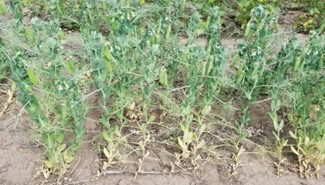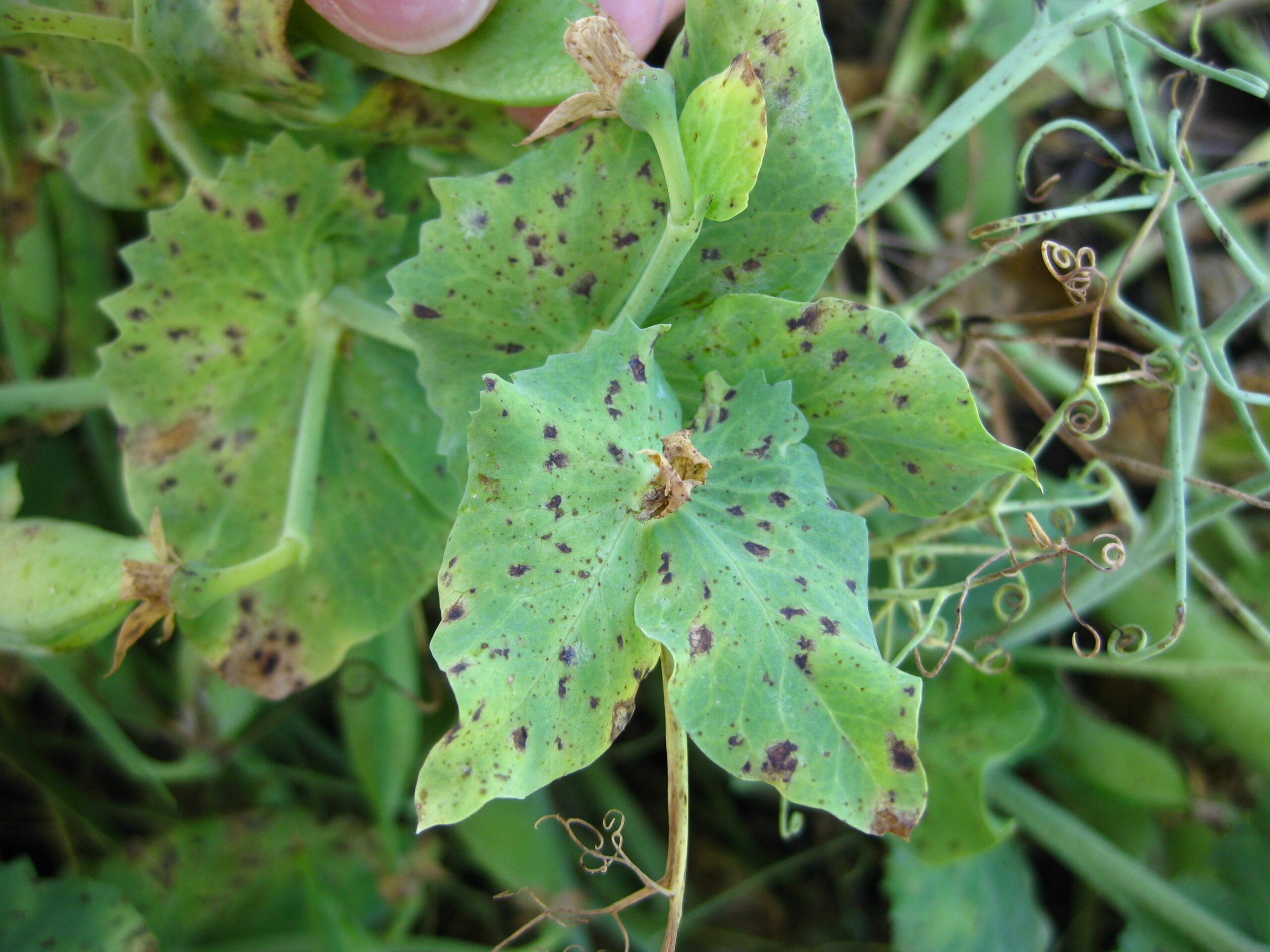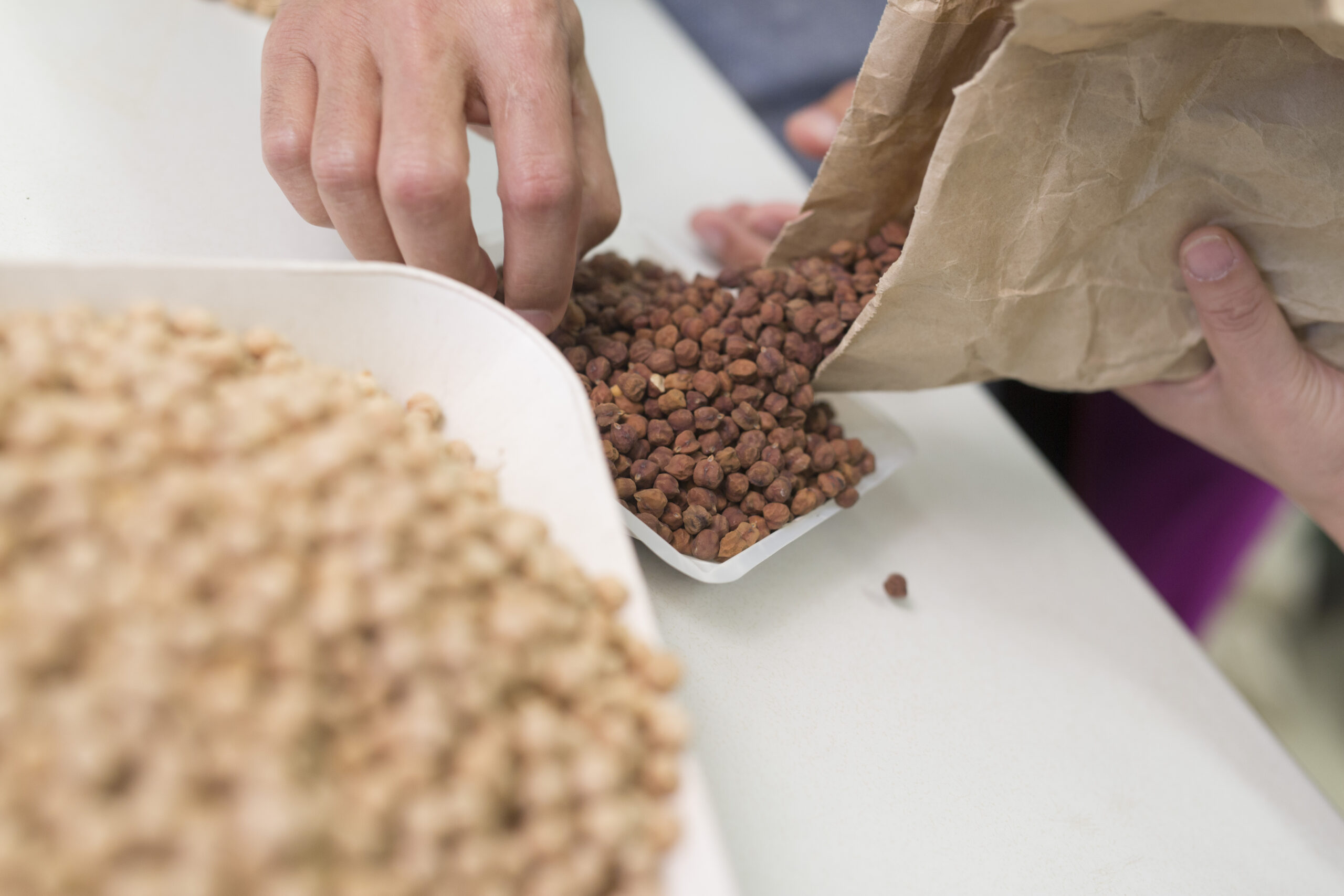Principal Investigator: Dr. Syama Chatterton
Institution: Agriculture and Agri-Food Canada (AAFC), Lethbridge, Alta.
Prepared by: Nate Ort, M.Sc.
This project, led by Dr. Syama Chatterton of AAFC in Lethbridge, Alta. identified Aphanomyces and Fusarium root rots as major pathogens of field pea and lentil in Alberta and Saskatchewan. The yield loss caused by root rots must be mitigated and can be addressed through a combination of enhanced disease screening in breeding programs, by understanding the physiological mechanisms of the pathogen and the host’s resistance, and by adopting the best agronomic management practices.
Breeding Initiatives
Work towards the investigator’s breeding objective to increase field pea resistance to root rot began with screening breeding material for a response to Fusarium avenaceum. The first set of lines tested did not have resistance to this pathogen however these have been registered for resistance against Fusarium solani. The breeding material screened in the outdoor microplots with soil naturally infested with Aphanomyces and Fusarium did not have greater resistance than CDC Meadow. This demonstrates how partial resistance behaves under a multiple-infection scenario and greenhouse screening protocols for the root rot complex should be developed to increase the testing capacity in field pea breeding programs for these diseases. Additional field screening was performed from 2019–2022 and few lines with adequate resistance to Fusarium root rot were identified. The first steps towards developing breeding lines with Fusarium root rot resistance has been completed by screening breeding material with Canadian pathogen isolates but developing partially resistant varieties is challenging because of the complicated nature of the Fusarium species involved. The continuation of field testing of resistant pulse species will provide valuable information to farmers and agronomists on alternate field crops that can safely be grown in Aphanomyces and/or Fusarium-infested fields. The search for breeding material with sufficient resistance to Fusarium root rot continues.
Inoculated field plots were effective in screening for Aphanomyces, but their results were not consistent with the best performing breeding material under greenhouse screening methods. The investigators used a combination of several A. euteiches isolates for the greenhouse screening to reflect the variability in isolates from multiple field locations which resulted in high disease pressure. This indicates that partially resistant varieties are encouraged to be grown, however with caution, as there are potentially isolates already present in the field that are more aggressive and can evolve quicky to overcome the host’s resistance. After multiple iterations of screening this material the lines that showed the most consistent partial resistant response to F. avenaceum were not the same lines that showed partial resistance to A. euteiches. This investigation is ongoing.
Understanding Root Rot Physiology
Progress towards the investigator’s physiology initiatives began with developing a protocol to determine the best time interval for collecting plant tissue for RNA sequencing. Root rot symptoms began developing as early as two days after inoculation with A. euteiches spores. Root biomass was significantly lower for the inoculated plants compared to the control plants which indicates that infection with A. euteiches impacts root growth in as little as six days after infection. This provides a timeline for collecting root tissues for the RNA sequencing experiments. There was a clear relationship between the pathogen’s biomass and disease progression. The RNA sequencing was then performed on five partially resistant lines and two susceptible lines at 2-, 6-, 12-, and 24-hours after inoculation. Significant differences in disease severity were observed in all the partially resistant lines when compared to the susceptible cultivar but not in comparison with CDC Meadow. These experiments will continue, and their analysis is ongoing.
Agronomy
The frequency of field pea in a field’s crop rotation contributes to the amount of pathogen inoculum in the soil and is being tested by the investigators to determine the optimal length of time required to reduce these levels. Farmer fields with moderate levels of root rot were identified from disease surveys conducted in 2015 and 2016 and were used for the investigator’s crop rotation experiments beginning in 2018. Therefore, there was a two- or three-year break between the last seeded pea or lentil crop before the field experiment began. The rotations tested were designed to investigate the frequency of field pea in rotation with or without other pulse crops. Root samples were analyzed at AAFC Lethbridge and rated for disease severity before the DNA extraction and analysis of A. euteiches, F. avenaceum, and F. solani concentrations. Soil samples will be used for DNA extractions as well and were assessed for the same pathogens. Year-4 of these rotation trials were successfully conducted at six sites in 2021: Lethbridge and Lacombe in Alberta, Saskatoon, Swift Current, and Redvers in Saskatchewan, and Morden in Manitoba. At most of the sites tested there was no reduction in disease severity regardless of the pea crop rotation interval (for example one year between pea, three to four years between pea, or three to four years between pea with an alternate pulse crop). The exception to this was at Redvers where there was a significant reduction in disease severity in plots with a three-year break with or without a soybean crop. This same disease reduction was not observed in 2021 which may have been because of the persisting drought conditions at all field experiment sites. The investigators are also actively exploring disease severity on field pea when it is intercropped with other field crop species.
Key Findings
- Some of the investigator’s breeding material that had resistance to Fusarium solani did not have resistance Fusarium avenaceum.
- A timeline for collecting root tissues for RNA sequencing was determined.
- Drought conditions in 2021 affected all sites in the field pea rotation frequency experiment.




